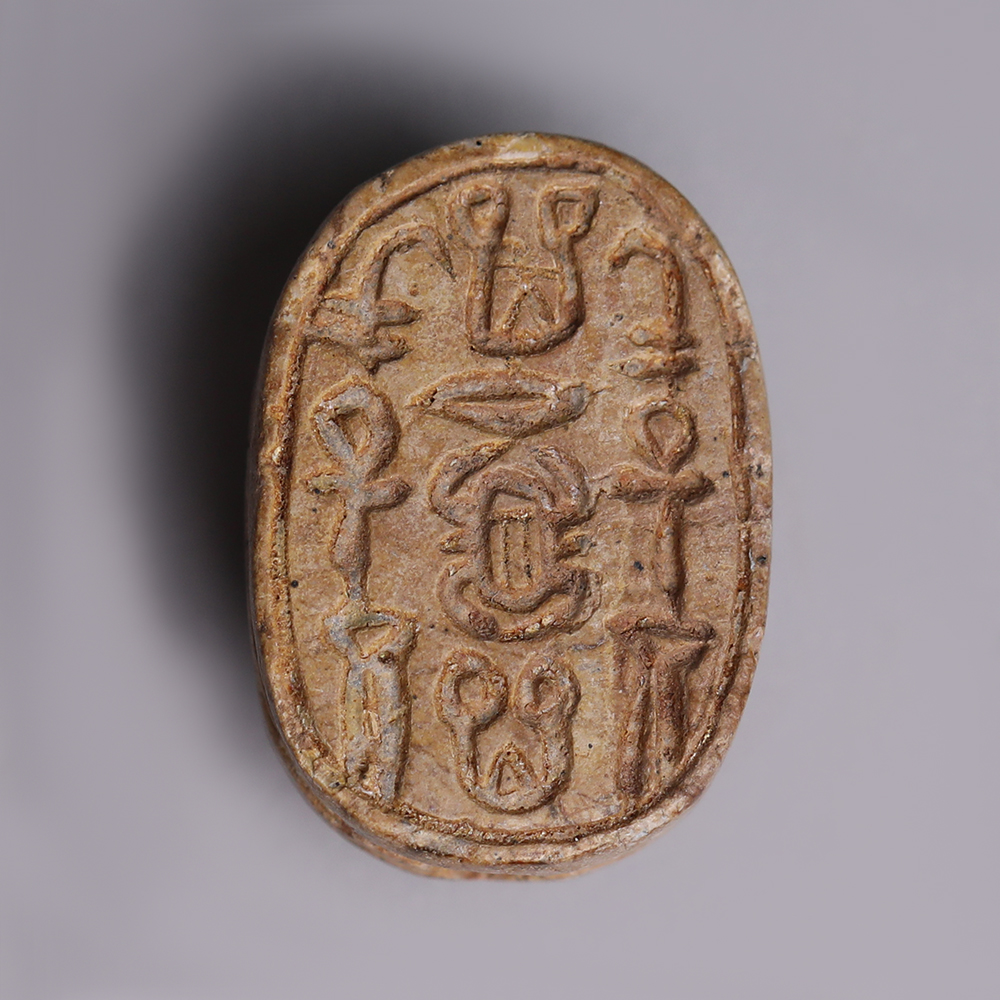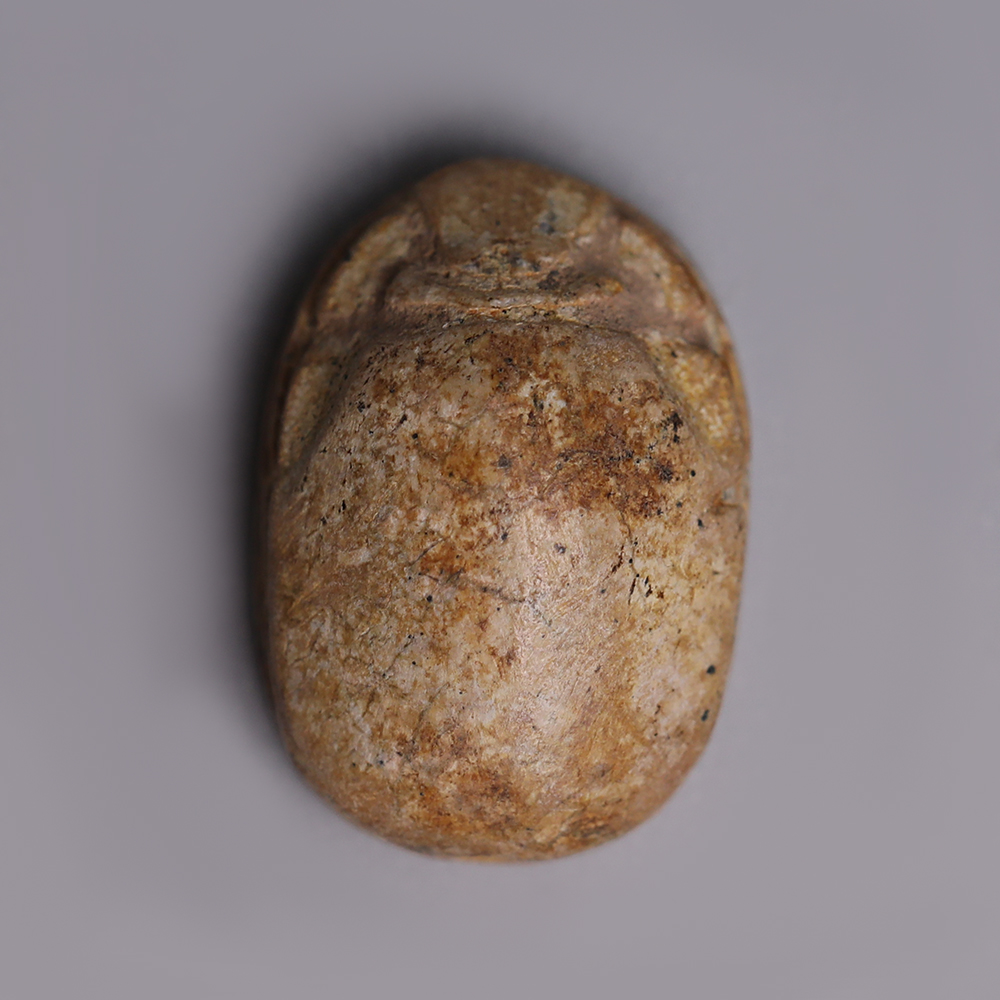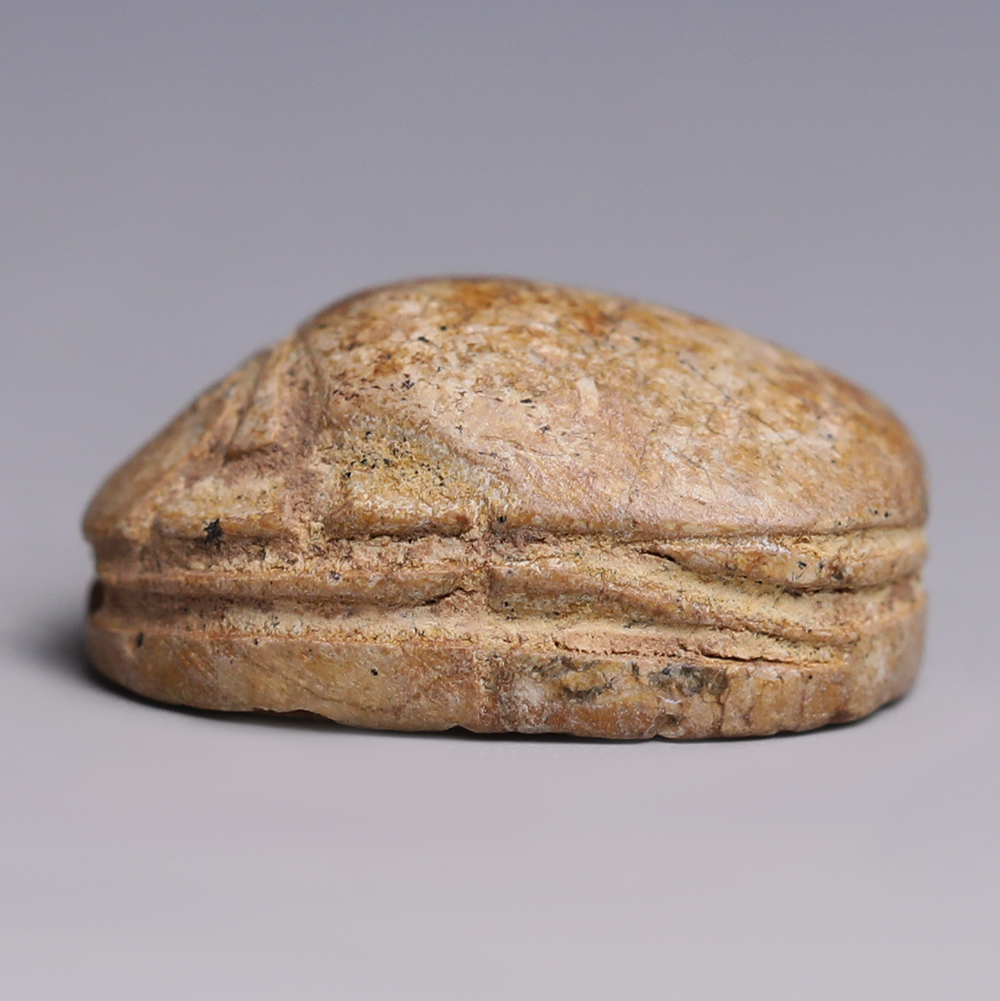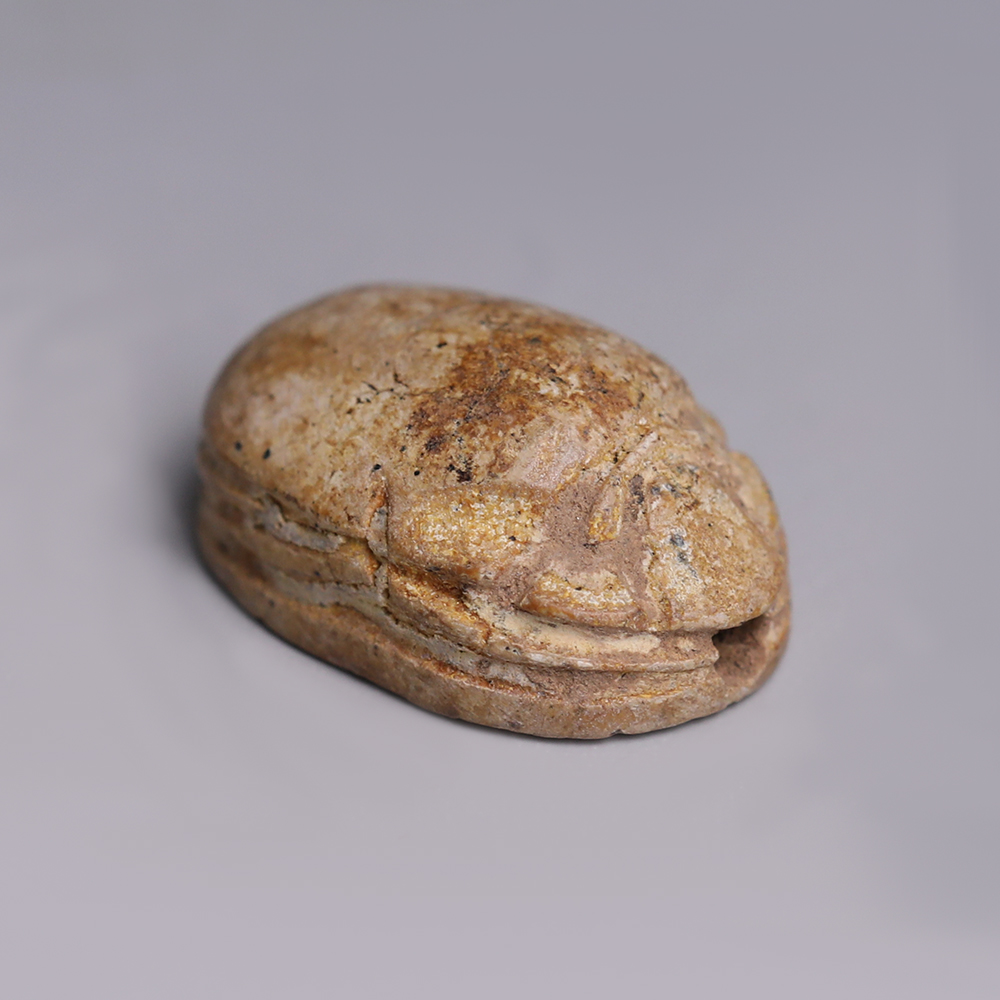Egyptian Steatite Hyksos-Period Scarab with Apotropaic Signs
$373.70
A steatite Egyptian scarab decorated to the reverse with hieroglyphs. The front features a detailed head and clypeus. The elytra remains plain, with indentations at the side to indicate the separation between prothorack and elytra. The reverse features inscribed hieroglyphs, placed symmetrically, and include various apotropaic signs, spaced in vertical registers. To the centre is a prominant scarab, flanked above and below by the raised arms ‘ka’ sign. Flanking the central register are the important ankh signs.
The amulet is pierced longitudinally for suspension.
Date: Circa 1650 - 1550 BC
Period: Second Intermediate Period, 15th Dynasty, Hyksos Period
Provenance: Ex major S.M., London, Collection 1970-2010.
Condition: Very fine. Clear and precise hieroglyphs.
SOLD
The Hyksos period, during the late Middle Kingdom, was a period of foreign rule by a succession of Asiatic chieftains, hailing from the Levant. Craftsmen followed on the tradition of using scarabs as protection amulets however their style and motifs were different. A scarab such as this, typical of the Hyksos style, features characteristic ‘Egyptian’ hieroglyphs formulated into a symmetrical pattern. The Hyksos recognised the apotropaic values of the scarab and one such as this, with the ankh and ka signs, would have been exceedingly popular. The Ka signs, in particular, are stylistically identifiable as Hyksos-period.
To find out more about Ancient Egyptian amulets please see our relevant blog post: Egyptian Amulets and their Meanings.



